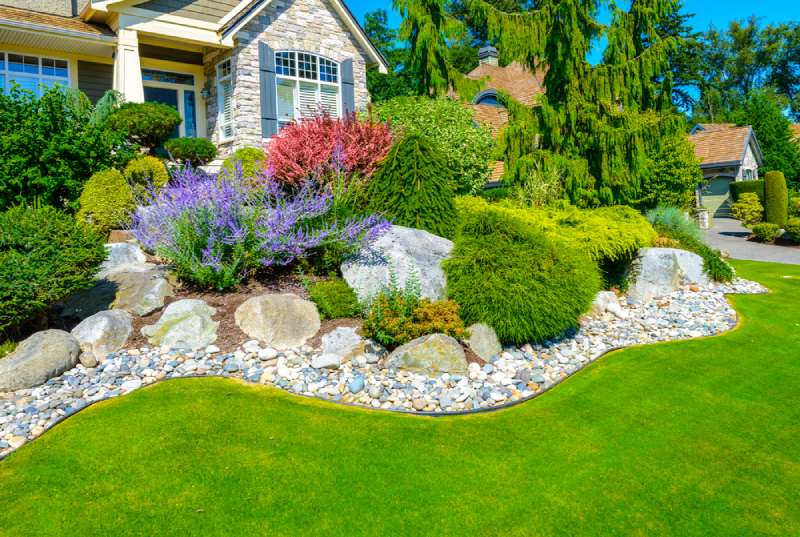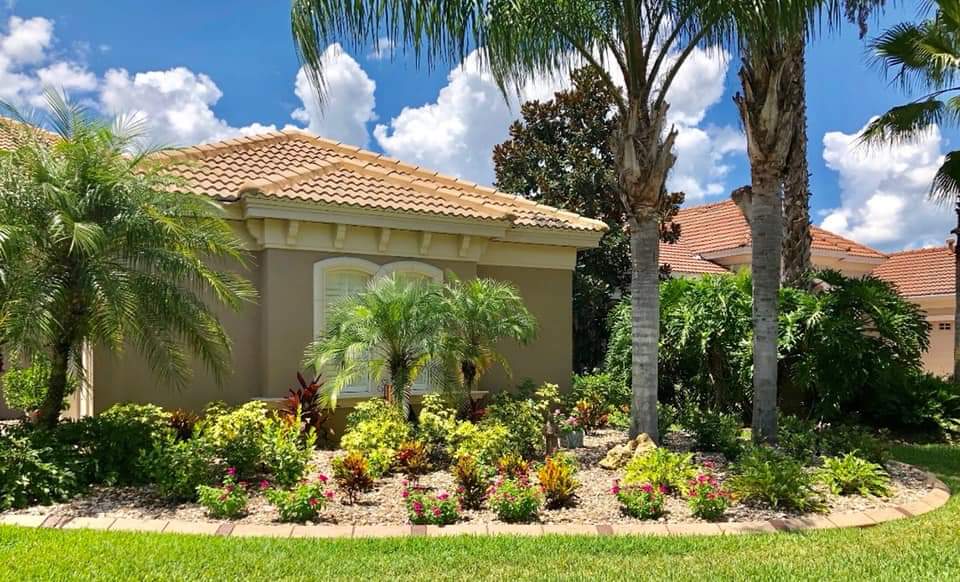Top Tips for Enhancing Your Yard with Palm Desert Landscaping Ideas
Top Tips for Enhancing Your Yard with Palm Desert Landscaping Ideas
Blog Article
A Comprehensive Overview to Designing and Implementing Effective Landscaping Solutions
The art and science of landscape design extend beyond plain appearances; they entail a thoughtful integration of layout concepts, ecological stewardship, and sensible implementation. A detailed overview to effective landscape design solutions starts with an in-depth understanding of your outdoor area, highlighting the relevance of equilibrium, proportion, and unity. As we explore sustainable techniques and the choice of appropriate vegetation, the ramifications for biodiversity and area wellness end up being progressively evident. What approaches can one utilize to ensure these landscapes not only flourish however additionally flourish attuned to their environments?

Understanding Landscape Layout Principles
One could wonder what fundamental aspects contribute to effective landscape style. At its core, effective landscape design hinges on a number of vital principles that guide the setup and option of elements within a space. These principles consist of unity, rhythm, proportion, and balance, each serving to produce an unified exterior atmosphere.
Unity describes the natural relationship amongst various elements, guaranteeing that they collaborate visually and functionally. Equilibrium can be attained via balanced or asymmetrical arrangements, allowing the landscape to really feel steady and inviting. Proportion includes understanding the scale of elements in connection with each various other and the surrounding setting, advertising visual consistency and convenience.

Assessing Your Outdoor Area
Before executing the principles of landscape layout, a comprehensive analysis of your exterior room is important. This preliminary analysis aids specify the range of your landscaping project and makes sure that your style straightens with the one-of-a-kind features of your home. Begin by examining the dimensions of your room, taking precise measurements to recognize the offered area for numerous components such as yards, outdoor patios, and paths.
Following, observe the existing attributes of your landscape, including topography, soil high quality, and drain patterns. These variables considerably affect plant choice and positioning. In addition, evaluate the sunlight exposure across various areas throughout the day, as this will certainly influence the sorts of plants that thrive in your garden.
Think about the microclimates developed by frameworks, trees, and various other obstacles, as they can influence temperature and wetness levels. Take note of any type of existing plants or hardscape aspects that you desire to eliminate or retain. This detailed evaluation prepares for a educated and effective landscaping remedy, making certain that your style is not only aesthetically pleasing however lasting and likewise practical for years to come.
Lasting Landscaping Strategies
Including lasting landscape design methods is vital for creating an environmentally liable exterior area. These practices not just promote eco-friendly balance however likewise enhance the functional and visual value of a landscape. One fundamental strategy is the application of native plants, which call for much less water and upkeep while sustaining local wildlife. Applying efficient watering systems, such as drip watering, reduces water waste and makes certain that plants get sufficient moisture.

An additional reliable strategy is the critical positioning of hedges and trees to offer natural windbreaks and color, thus reducing power prices (Palm Desert Landscaping). Rain gardens can be incorporated right into the landscape layout to take care of stormwater overflow efficiently, filtering toxins before they go into waterways
Picking the Right Plants
Selecting the right plants for your landscape is vital to attaining both visual allure and ecological harmony. The procedure starts with an understanding of your regional climate, soil conditions, and the specific microenvironments within your landscape. Assessing aspects such as sunlight exposure, moisture levels, and existing plants will help you choose plants that grow in your unique setup.
Think about incorporating indigenous plants, as they are well-adapted to neighborhood conditions, call for less upkeep, and support neighborhood wildlife. Additionally, picking a varied variety of varieties can boost biodiversity while lowering the danger of disease and pest episodes. It is vital to assess the development habits, flowering durations, and seasonal colors of possible plants to develop a cohesive and vibrant landscape.
Furthermore, consider the meant usage of the space; as an example, if the area will certainly experience high foot traffic, go with durable ground covers. By thoughtfully choosing plants that get more straighten with both your ecological requirements and aesthetic objectives, you can produce a sustainable landscape that not just boosts your property but also adds positively to the surrounding ecosystem.

Application and Maintenance Strategies
As soon as the right plants have actually been chosen for your landscape, the emphasis changes to reliable application and recurring maintenance methods. Effective installation begins with proper site preparation, which consists of soil screening to figure out nutrient degrees and pH, adhered to by changing the soil as required. Meticulously arrange plants according to their growth habits and light demands, making sure adequate spacing to promote healthy and balanced development.
Watering is a critical aspect of application. Develop a watering timetable that takes into consideration the certain needs of each plant varieties, readjusting for seasonal adjustments. Using drip irrigation systems can enhance water performance and minimize overflow.
Maintenance techniques Website need to be executed to guarantee the long life and vigor of your landscape. Normal tasks consist of weeding, mulching, and trimming to manage development and stop disease. Fertilization ought to be conducted based on soil examinations, giving the essential nutrients without over-fertilizing.
Keeping an eye on for insects and illness is important; early discovery can stop considerable damage. Finally, seasonal adjustments to upkeep regimens, such as winterizing perennials and preparing for springtime development, will certainly make certain that your landscape remains aesthetically enticing and healthy year-round.
Final Thought
Effective application and continuous upkeep even more make certain the durability and vigor of landscapes. By integrating these aspects, landscapes can be changed into gorgeous, useful atmospheres that promote biodiversity and contribute favorably to neighborhood wellness.
One may wonder what fundamental aspects add to efficient landscape layout. At its core, successful landscape style hinges on several key concepts that direct the plan and selection of components within an area.Picking the right plants for your landscape is important to attaining both visual allure and environmental consistency. It is vital to assess the development behaviors, growing durations, and seasonal shades of prospective plants to develop Full Report a vibrant and natural landscape.
When the appropriate plants have actually been selected for your landscape, the focus changes to effective application and ongoing upkeep techniques.
Report this page